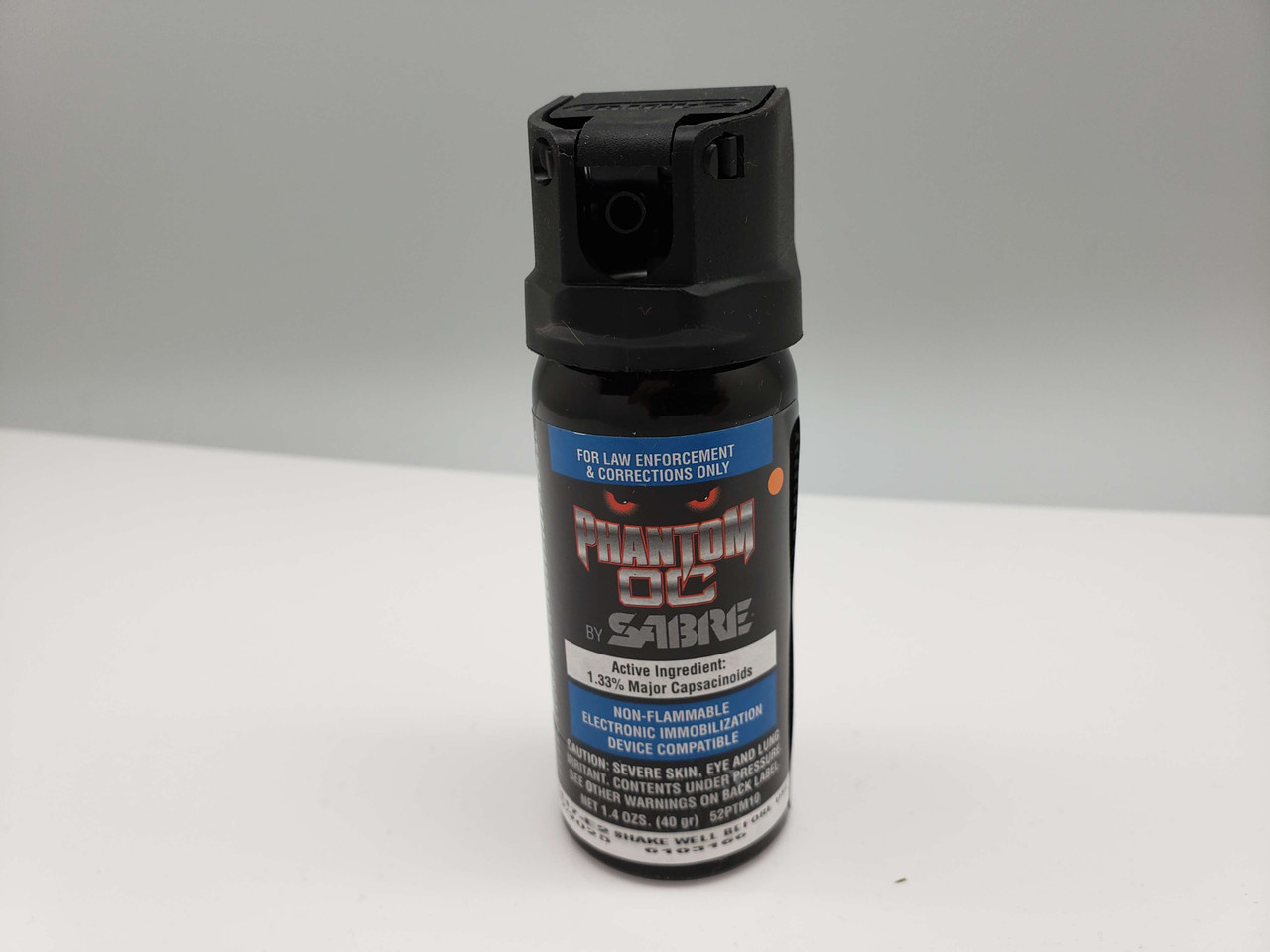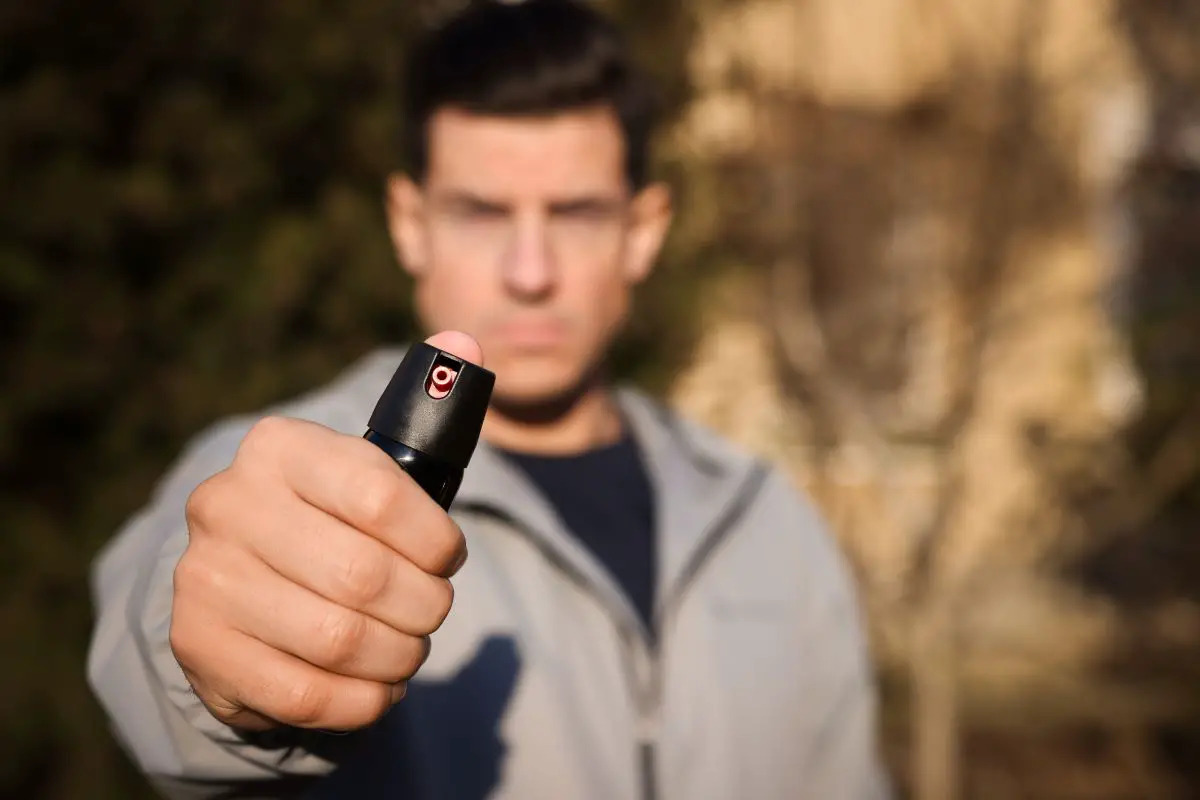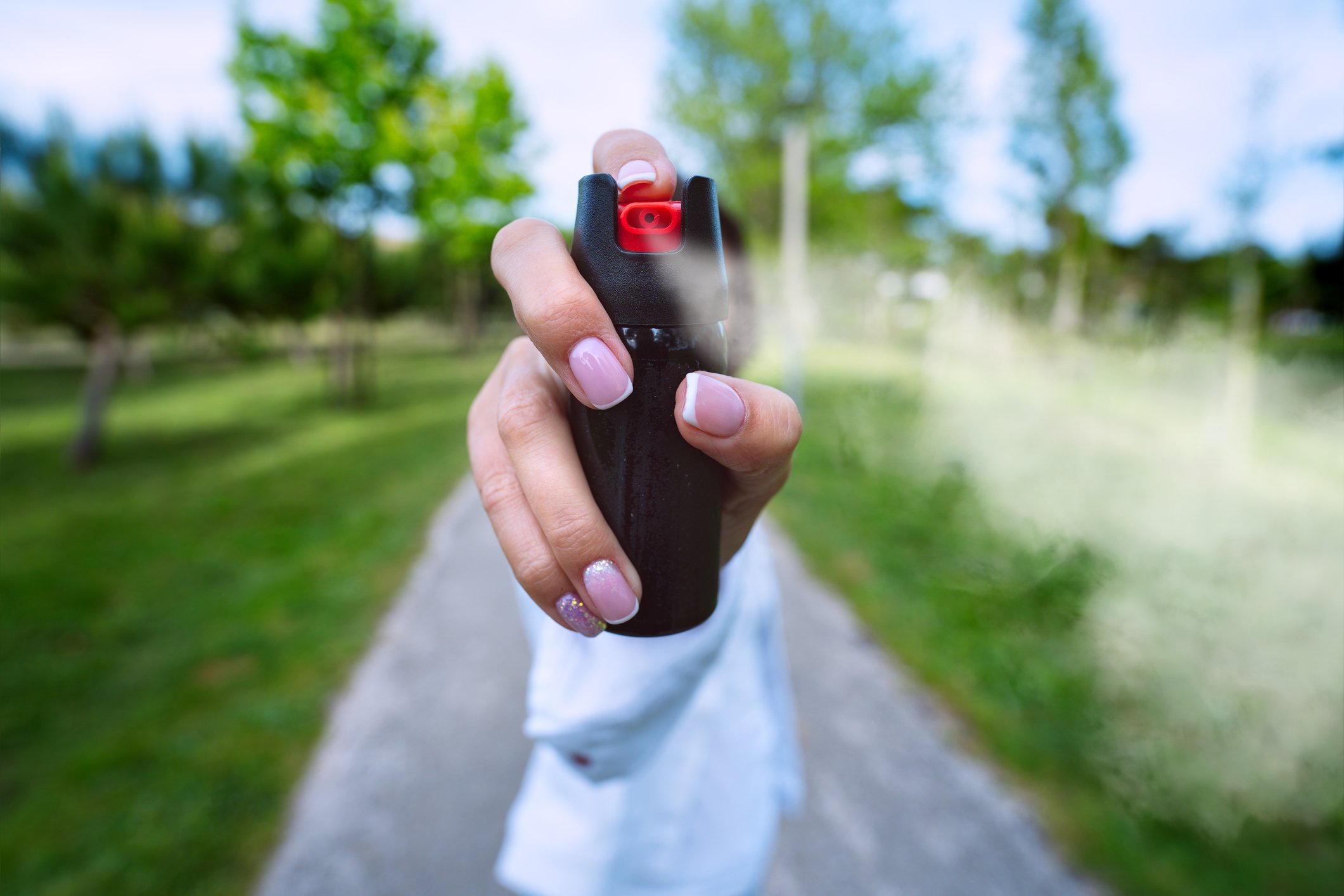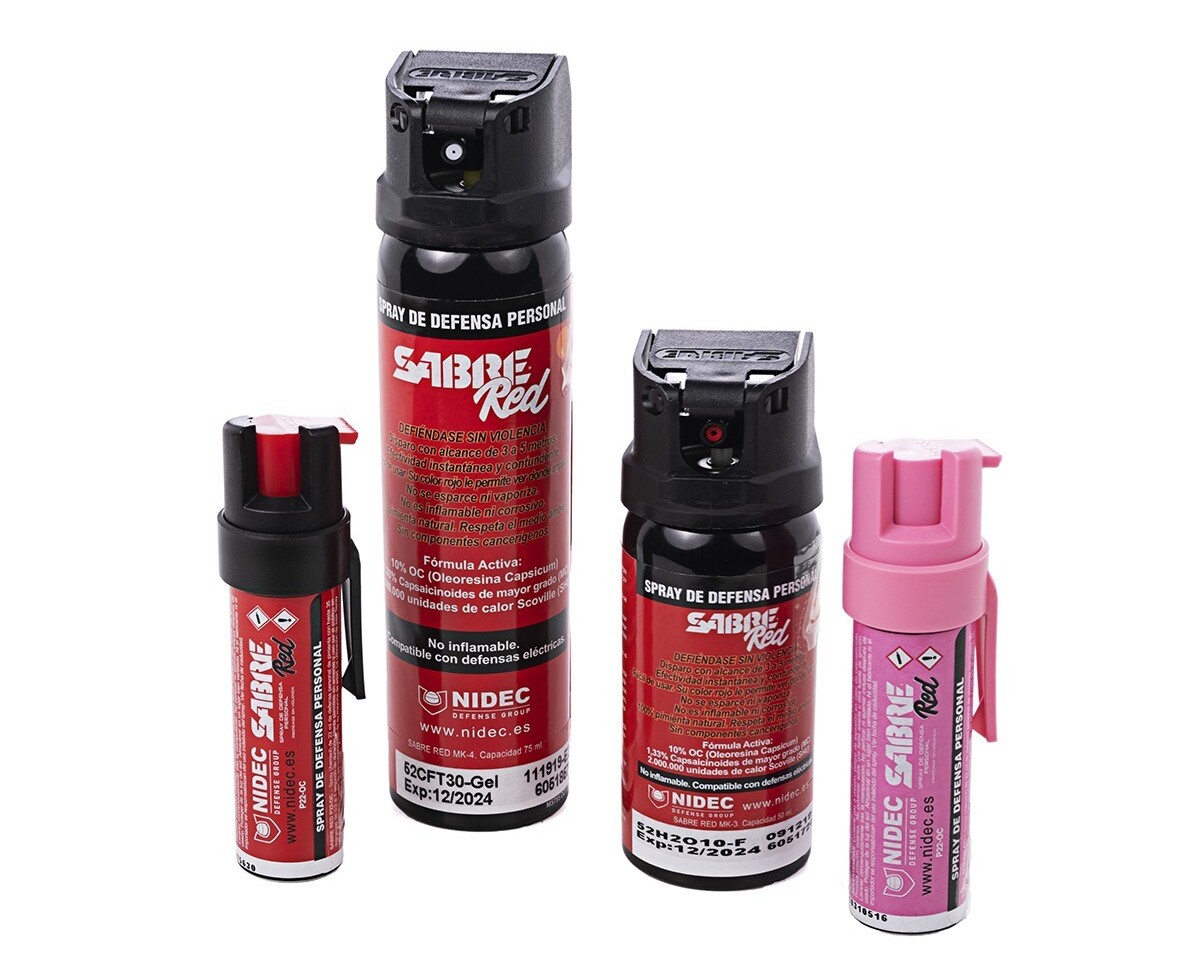Home>Home Security and Surveillance>How Does Pepper Spray Taste


Home Security and Surveillance
How Does Pepper Spray Taste
Modified: August 17, 2024
Looking for home security and surveillance? Find out how pepper spray tastes and why it's an effective self-defense tool!
(Many of the links in this article redirect to a specific reviewed product. Your purchase of these products through affiliate links helps to generate commission for Storables.com, at no extra cost. Learn more)
Introduction
Welcome to the world of home security and surveillance! In today’s rapidly evolving society, it is increasingly important to prioritize the safety of our homes and loved ones. Home security systems and surveillance technologies have become essential tools to ensure our peace of mind and protect our belongings.
As an expert in the field of home security and surveillance, I am excited to share with you my knowledge and insights on this crucial topic. In this article, we will explore the fascinating world of pepper spray, a commonly used self-defense tool in the realm of home security. We will delve into its chemical composition, its physical effects, and most intriguingly, its taste.
Pepper spray, also known as OC spray (oleoresin capsicum), is a popular choice for individuals seeking a non-lethal means of self-defense. It is widely used by law enforcement personnel, security professionals, and even everyday citizens. Its effectiveness and ease of use make it an attractive option for personal safety.
Before we dive into the taste of pepper spray, let’s first gain a better understanding of what it is and how it works. With this basic knowledge, we can appreciate the unique characteristics that make it an effective tool in home security and self-defense.
Stay tuned as we explore the chemical composition and physical effects of pepper spray, uncover its potential health risks and side effects, and ultimately discover how it actually tastes. Are you ready to embark on this intriguing journey? Let’s dive in!
Key Takeaways:
- Pepper spray tastes extremely spicy and burning, like biting into a fiery hot pepper. Its unpleasant taste serves as a deterrent to attackers, making it effective for self-defense.
- Personal experiences with pepper spray taste vary, with some finding it unbearable and others managing it more easily. Understanding its taste helps make informed decisions for personal safety.
Read more: How To Store Pepper Spray
Understanding Pepper Spray
Pepper spray is a non-lethal self-defense tool that is used to deter attackers and incapacitate them temporarily. It contains a chemical compound called capsaicin, which is derived from chili peppers. Capsaicin is known for its intense irritant properties, causing severe discomfort and temporary immobilization when it comes into contact with the eyes, nose, and skin.
The primary function of pepper spray is to irritate the mucous membranes of the eyes, causing temporary blindness and intense pain. It also causes inflammation of the respiratory system, making it difficult for the attacker to breathe properly. These effects are typically enough to disable an aggressor, providing the victim with an opportunity to escape or seek help.
Pepper spray comes in various forms, including pepper spray canisters, pepper gel, and even pepper foam. The delivery method may vary, but the active ingredient, capsaicin, remains the same. It is important to note that pepper spray should only be used as a self-defense tool and should never be used to intentionally cause harm or for malicious purposes.
When purchasing pepper spray, it is essential to choose a high-quality product from a reputable manufacturer. Look for brands that have undergone rigorous testing and adhere to safety regulations. Additionally, it is crucial to familiarize yourself with your local laws and regulations regarding the possession and use of pepper spray, as restrictions may vary from one jurisdiction to another.
It is also worth mentioning that pepper spray should be used responsibly and only as a last resort. While it is a valuable tool in self-defense, it should never be used casually or as a means of settling disputes. Understanding the power and potential consequences of pepper spray is paramount in ensuring its safe and effective use.
In the next section, we will take a closer look at the chemical composition of pepper spray, which will shed light on why it has such potent effects on those who come into contact with it.
Chemical Composition of Pepper Spray
Pepper spray is comprised of a combination of chemicals, with the main active ingredient being capsaicin, derived from chili peppers. Capsaicin is a powerful irritant that triggers a series of physiological reactions when it comes into contact with the eyes, nose, and skin.
The concentration of capsaicin in pepper spray can vary depending on the product. However, it is typically within the range of 0.18% to 3%. The higher the concentration, the more potent the effects of the spray.
In addition to capsaicin, pepper spray may also contain other ingredients such as water, propylene glycol, and various inert substances. These additional components help to disperse the capsaicin and allow for better coverage. Some formulations also include UV dyes, which aid in the identification and apprehension of attackers.
What makes capsaicin particularly effective as a component of pepper spray is its direct impact on the body’s pain receptors. When capsaicin interacts with these receptors, it triggers a burning and stinging sensation, causing immediate discomfort. The primary targets of capsaicin are the mucous membranes of the eyes, nose, and respiratory system.
When pepper spray is sprayed directly in the face, the capsaicin is absorbed through the eyes and the sensitive tissues of the respiratory system. This results in temporary inflammation and swelling, leading to temporary blindness and difficulty breathing.
It is important to note that while capsaicin is a potent irritant, it is generally considered safe for use in pepper spray when used appropriately. The effects are temporary and typically do not cause any lasting harm or permanent damage. However, it is crucial to follow the manufacturer’s instructions for proper use and to avoid excessive or prolonged exposure.
In the next section, we will explore the physical effects of pepper spray on the body, which will further highlight why it is such an effective self-defense tool.
Physical Effects of Pepper Spray
When pepper spray makes contact with the eyes, nose, or skin, it immediately triggers a range of physical effects. These effects are designed to incapacitate the attacker temporarily and provide the victim with a window of opportunity to escape or seek help.
One of the most prominent effects of pepper spray is the intense burning and stinging sensation it causes. When sprayed into the eyes, the capsaicin in the spray irritates the sensitive tissues, resulting in severe pain, temporary blindness, and involuntary closure of the eyes. This immediate and overwhelming sensory overload makes it extremely difficult for the attacker to see and continue their aggressive behavior.
In addition to its effects on the eyes, pepper spray also affects the respiratory system. When inhaled, the capsaicin irritates the nose, throat, and lungs, causing inflammation and constriction of the airways. This can lead to coughing, wheezing, and difficulty breathing. The combination of pain, inflammation, and restricted airflow makes it challenging for the attacker to continue pursuing their target effectively.
Pepper spray also affects the skin, causing a burning sensation and temporary skin irritation. The pain and discomfort are usually felt immediately upon contact and can last for several minutes after exposure. While the effects on the skin are less severe compared to those on the eyes and respiratory system, they still contribute to the overall incapacitation of the attacker.
It is important to note that the physical effects of pepper spray are temporary and typically subside within 30 minutes to an hour. After the effects wear off, no long-term harm or damage is expected. However, individuals with pre-existing respiratory conditions or allergies may experience more severe reactions, and it is advisable to seek medical attention if necessary.
It is also worth mentioning that pepper spray can inadvertently affect the user to some extent. Proper technique and aiming are important to minimize the risk of self-exposure. It is recommended that individuals practice using pepper spray in a controlled setting to become familiar with its handling and dispersal.
In the next section, we will explore the potential health risks and side effects associated with pepper spray, ensuring a comprehensive understanding of its usage.
Health Risks and Side Effects
While pepper spray is generally safe for use when applied properly, it is important to be aware of potential health risks and side effects. Understanding these risks will enable individuals to make informed decisions about its usage and minimize the chances of any adverse reactions.
One of the primary concerns with pepper spray is its potential to cause respiratory distress, especially in individuals with pre-existing respiratory conditions such as asthma or chronic obstructive pulmonary disease (COPD). In such cases, exposure to pepper spray can exacerbate symptoms and lead to severe breathing difficulties. It is crucial for individuals with these conditions to exercise caution and consult their healthcare provider before using pepper spray for self-defense.
Another possible side effect of pepper spray is skin irritation. While the effects on the skin are typically temporary, some individuals may experience more severe reactions, such as blistering or allergic reactions. It is important to test a small area of skin before using pepper spray to determine if any adverse reactions occur. If a severe skin reaction occurs, immediate medical attention should be sought.
The direct contact of pepper spray with the eyes can also cause temporary vision impairment and intense pain. While the effects are usually temporary, it is important to rinse the eyes thoroughly with water and seek medical assistance if the symptoms persist or worsen. Individuals who wear contact lenses should remove them immediately to prevent further irritation.
It is worth noting that certain medications and substances may interact with pepper spray and potentially increase its effects or impede its effectiveness. Individuals taking medications for heart conditions or psychiatric disorders should consult their healthcare provider before using pepper spray. Additionally, alcohol and other substances that impair judgment or coordination should be avoided when using pepper spray, as they may hinder the ability to use it safely and effectively.
To minimize the risk of health complications and side effects, it is crucial to follow the manufacturer’s instructions for proper use of pepper spray. This includes using it from a safe distance, aiming for the face, and avoiding excessive or prolonged exposure. Familiarize yourself with the specific features and instructions of your pepper spray product to ensure maximum effectiveness and safety.
In the next section, we will explore the intriguing aspect of pepper spray – its taste. Stay tuned to discover what pepper spray actually tastes like.
After being exposed to pepper spray, rinse your mouth with cold water and drink milk to help neutralize the burning sensation. Avoid hot or spicy foods.
Read more: How Far Does A Pepper Spray Go
The Taste of Pepper Spray
Pepper spray, as the name suggests, contains capsaicin, derived from chili peppers, which is known for its intense heat and spiciness. Naturally, this raises the question: what does pepper spray actually taste like?
While I haven’t personally tasted pepper spray (and I don’t advise doing so), it is commonly described as having an extremely spicy, burning sensation, similar to biting into a habanero pepper or experiencing the intense heat of a hot sauce. The taste can be overwhelmingly pungent and fiery, causing a feeling of intense discomfort and a desire to rinse the mouth immediately.
It is important to note that the primary purpose of pepper spray is for self-defense, and its taste is a byproduct of its chemical composition. The taste is intentionally unpleasant and serves as an additional deterrent to potential attackers, making them think twice before initiating aggressive behavior.
The taste of pepper spray can vary slightly depending on the specific formulation and concentration used. Some brands may also include additives or flavoring to mask or enhance the taste. However, these additives do not significantly alter the overall sensation of intense spiciness and burning.
It is worth mentioning that the taste of pepper spray is not the main concern when it comes to its usage. The immediate effects of temporary blindness, respiratory distress, and intense pain greatly overshadow any consideration of its taste. Pepper spray is a tool of self-defense, and its taste serves as a testament to its effectiveness in deterring attackers.
While it’s important to have an understanding of what pepper spray tastes like, it is crucial to remember that the taste is secondary to its intended purpose. It is vital to exercise caution and proper judgment when using pepper spray and to use it responsibly and within the confines of the law.
In the next section, we will explore the factors that can affect an individual’s perception of the taste of pepper spray. Stay tuned to discover more about this intriguing topic.
Factors Affecting the Perception of Taste
While the taste of pepper spray is generally described as intensely spicy and burning, the perception of taste can vary from person to person. Several factors can influence how an individual experiences the taste of pepper spray.
1. Sensitivity: Each person has a different level of sensitivity to spicy foods. Some individuals may have a high tolerance for heat and find the taste of pepper spray more bearable, while others may feel overwhelmed by even a slight exposure. Factors such as genetics and prior exposure to spicy foods can affect a person’s sensitivity to the taste of pepper spray.
2. Personal Preferences: Personal preferences for spicy foods can shape the perception of the taste of pepper spray. Individuals who enjoy and regularly consume spicy foods may be more accustomed to the sensation and find the taste of pepper spray more tolerable. On the other hand, those who have a low tolerance for spicy foods may find the taste of pepper spray extremely unpleasant.
3. Individual Resilience: Some individuals have a higher tolerance for pain and discomfort, both physically and mentally. These individuals may be able to endure the taste of pepper spray more easily compared to those with lower pain tolerance. Factors such as mindset, mental resilience, and experience with challenging situations can influence how an individual perceives and copes with the taste of pepper spray.
4. Concentration and Formulation: The concentration of capsaicin and the specific formulation of the pepper spray can also impact the taste. Higher concentrations of capsaicin will lead to a more intense and potent taste, while certain additives or flavorings may slightly alter the overall flavor. However, it’s important to note that regardless of the concentration or formulation, the taste of pepper spray will always be hot and pungent.
5. Timing and Duration: The duration and timing of exposure to pepper spray can affect how the taste is perceived. A short exposure may result in a more immediate and intense sensation, while a longer exposure could lead to a prolonged burning sensation. The taste may also linger even after the immediate effects subside.
It is important to remember that while these factors can influence the perception of taste, the purpose of pepper spray is not to provide a pleasant or enjoyable experience. Its taste acts as a deterrent and is intended to incapacitate potential attackers rather than provide gastronomic pleasure.
In the next section, we will explore personal experiences with the taste of pepper spray, giving you an insight into the real-life encounters and perspectives of individuals who have had firsthand experiences.
Personal Experiences with Pepper Spray Taste
Personal experiences with the taste of pepper spray can vary greatly, as each individual’s encounter is unique. To gain a deeper understanding of the real-life perspectives surrounding this topic, let’s explore a few personal anecdotes shared by individuals who have had firsthand experiences with pepper spray.
Some individuals describe the taste of pepper spray as an immediate and overwhelming sensation of intense heat and spiciness. They liken it to biting into a fiery hot pepper or consuming a mouthful of potent hot sauce. The taste is often described as unbearable and leaves a lasting impression of intense discomfort.
Others explain that the taste of pepper spray is not just akin to spicy foods but surpasses them in intensity. It is often described as an all-encompassing burn that permeates the mouth and throat, causing an overwhelming sensation of pain and a strong desire for immediate relief.
Individuals who have experienced the taste of pepper spray also note that it can be accompanied by a bitter or metallic undertone. This additional flavor adds to the overall unpleasant experience, further heightening the overall discomfort.
It’s important to mention that while the taste can be excruciating, individuals who have used pepper spray in self-defense often highlight that the intense spiciness and burning sensation play a crucial role in deterring attackers. They emphasize that the taste is a necessary component for accomplishing the primary goal of incapacitating the aggressor and creating an opportunity for escape or seeking help.
It is worth noting that personal experiences and perceptions of the taste of pepper spray can vary based on factors such as a person’s tolerance for spicy foods, pain threshold, and individual resilience. Some may find the taste more manageable due to prior exposure to spicy cuisines, while others may find it unbearable even with minimal exposure.
While these personal experiences provide insights into the taste of pepper spray, it is important to remember that its intended purpose is not gastronomic pleasure, but rather a means of personal safety and self-defense.
Now that we have explored personal experiences with the taste of pepper spray, let’s summarize our findings in the concluding section.
Conclusion
As we conclude our exploration of pepper spray and its taste, it is clear that pepper spray serves a vital role in home security and personal safety. Understanding its chemical composition, physical effects, and the taste it imparts is crucial for utilizing it effectively and responsibly.
Pepper spray is formulated with capsaicin, the compound responsible for the intense heat and spiciness of chili peppers. The taste of pepper spray has been described as extremely spicy, burning, and overwhelmingly pungent. It is intentionally unpleasant and serves as an additional deterrent to potential attackers.
Factors such as sensitivity, personal preferences, individual resilience, formulation, and concentration can influence how an individual perceives the taste of pepper spray. However, it is important to remember that the taste of pepper spray is secondary to its intended purpose of incapacitating attackers and providing a means of escape or seeking help.
Personal experiences with the taste of pepper spray vary, with some individuals finding it unbearable and others managing it more easily. It is their shared accounts that provide valuable insights into the real-life encounters and perspectives surrounding pepper spray.
While pepper spray is generally safe when used appropriately, it is essential to be aware of potential health risks and side effects. Respiratory distress, skin irritation, and eye irritation are among the possible concerns, particularly for individuals with pre-existing conditions. Following proper usage guidelines and consulting healthcare professionals when necessary is crucial for minimizing risks.
Pepper spray is a tool of self-defense, and its taste is a testament to its effectiveness. Its primary goal is to immobilize potential attackers, providing individuals with a chance to escape or seek assistance. It is imperative to use pepper spray responsibly and within the confines of the law.
In conclusion, understanding the taste of pepper spray provides a comprehensive understanding of its role in home security and personal safety. By being aware of its effects and limitations, individuals can make informed decisions when it comes to their own safety and the security of their loved ones.
Remember, pepper spray should be viewed as a last resort and should always be used responsibly, in accordance with local laws and regulations. Stay informed, stay safe, and prioritize the well-being of yourself and those around you.
Frequently Asked Questions about How Does Pepper Spray Taste
Was this page helpful?
At Storables.com, we guarantee accurate and reliable information. Our content, validated by Expert Board Contributors, is crafted following stringent Editorial Policies. We're committed to providing you with well-researched, expert-backed insights for all your informational needs.














